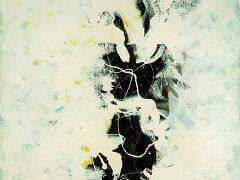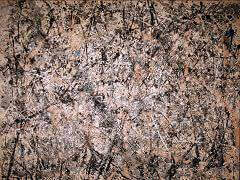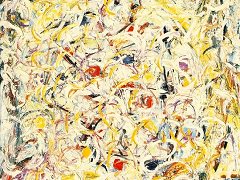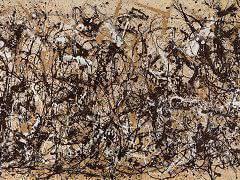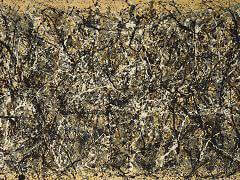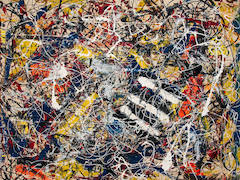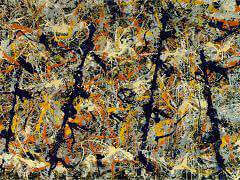Number 27, 1950 by Jackson Pollock
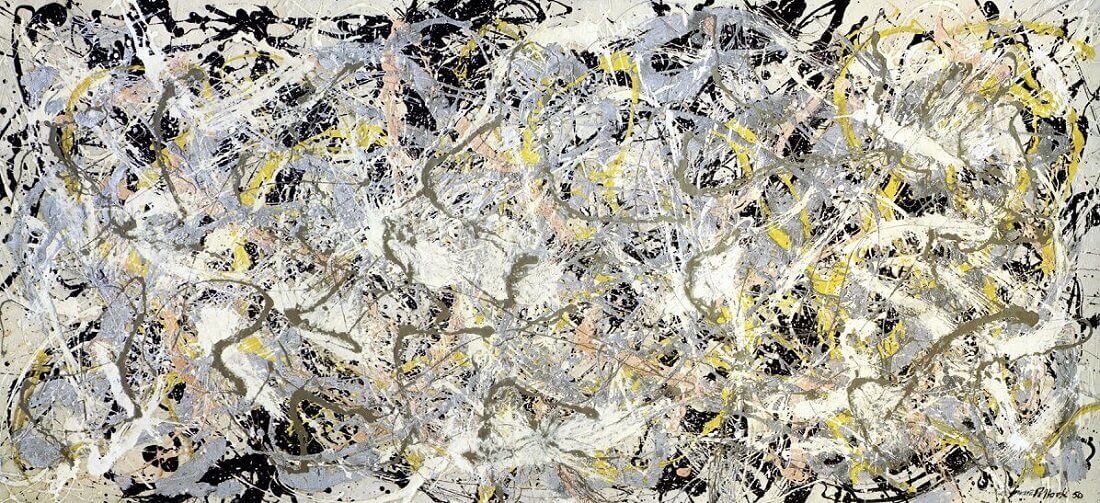
Attentive viewers of Jackson Pollock's Number 27, 1950 will notice a blue thread running almost parallel to the right framing edge until it meets the edge about half way up the picture. It then very closely tacks the
corner fold of the canvas without ever quite disappearing from view over the tacking margin. Such blue salvage threads - which indicate the upper and lower limits of a bolt of canvas, while protecting it against fraying - are
sometimes noticeable in other paintings by Pollock, especially along the top and bottom edges of his classic 1950 drip, pour, and spatter paintings, which utilize the full vertical dimension of a standard nine foot bolt of
canvas and extend laterally to over seventeen feet.
Number 27, 1950 is four by nine feet, which orients the threads to the left and right edges, rather than to the top and bottom. In addition to being differently placed in relation to the pictorial field, the thread in
Number 27, 1950 appears to be more conspicuous here than in the larger works. It is not that it is conspicuously used as an element in the overall composition: standing a few feet away, the thread is difficult to see.
Rather, at close range it seems meant to indicate the edge as a limit beyond which the representation cannot, literally, extend. Obviously, the material surface of the canvas is framed by actual limits, as all painted surfaces
ultimately are. The object, Pollock reminds us, has a frame. But the artist's inclusion of the thread seems to acknowledge this fact in a pointed way. In calling our attention to the actual frame by matching its edge so precisely
with a common manufacturing detail - yet one which also slips under the painted skeins it abuts - art critics like to suggest that Pollock encourages us to imagine another kind of frame. That "frame" is of a pictorial
(as opposed to literal) nature. Its "limits" should be thought of a qualitatively different from those of the actual material because, unlike physical limits, they do not first operate as constraints. The apparent limits of P
ollock's pictorial fields do not necessarily, and indeed rarely do, coincide with his paintings' actual limits. Those apparent limits are generated by the activity of painting itself, and thus emerge as a result of artist's
expressive purposes. The salvage thread helps mark the difference between the two different kinds of frames, and the limits they imply.



